Whilst Oscar (the organ at St Bartholomew's Church) continues his search for new benefactors, here is the story of James and Harriet Brown, who had a significant effect on his appearance in 1931, as told to St.Bart's organist Philip Underwood by Mrs Joyce Mary Brooks (b.1926).
Joyce is the great niece of James and Harriet Brown remembered on the Organ Case of St Bartholomew's Church Wilmslow. In 1931 her great uncle Jim paid for the organ case as a memorial to Harriet who had died in 1928. The case bears the following inscription:
"To the Glory of God and in Memory of Harriet Brown this organ case was made AD 1931 by her husband James Brown"
"The scissors engraved on the case were from her sewing box as I remember being told when I was taken to the church as a young girl."
Harriet was born on October 10th 1863, one of 9 daughters born to Mr William and Mrs Sarah Gilbert. The Gilbert family lived in a small cottage on the outskirts of Winsford on Darnhall School Lane near where Joyce herself now lives. "When they reached the age of 14, the girls were put into gentleman's' service."
James Brown joined his father in the family firm Levi Brown and Sons builders and contractors of Wilmslow which Joyce believes to be still in business although she is unsure whether the Brown family still own it. James lived in a very handsome property in Wilmslow and was sufficiently prosperous to be able to afford servants. "He used to send my Grandma £5 every Christmas to ensure we had a nice time."
Joyce recalls being taken to tea with James and Annie in 1946, the year before James died, by her great Aunt Bertha (Harriet's youngest sister born in 1880). Although Annie married into the Anderson family she had no children. Annie was a very keen golfer by all accounts.
When he retired, James liked to travel and his Wilmslow home "Sandroyd" (number 5 Macclesfield Rd, sadly now demolished) contained many beautiful items brought back from his foreign travels. Annie died in 1950 and on October 25th and 26th 1950 Sandroyd along with its contents was put up for sale. The sale was conducted by John Shapley Chartered Auctioneer and Estate Agent of Grove Lane who described James Brown as something of a connoisseur particularly in his collection of fine china.
"Great Auntie Bertha and I went to that sale. It was a very sad day for us. He would have been a multi millionaire if it had been sold today."
James and Harriet are buried together in the churchyard a few paces west of the Bell Tower.
"I hope there is a member of the Brown family still living who will be able to fill in more memories of this very kind man."
Photos: James and Harriet Brown, James and his only child daughter Annie and Joyce Mary Brooks.
Guest post by Philip Underwood. Click here for more information on the campaign to raise £250,000 for the restoration of Oscar the Organ.



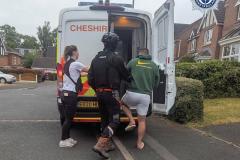

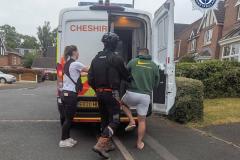

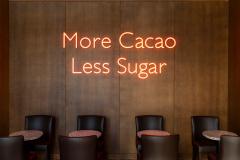
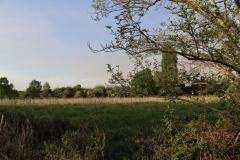

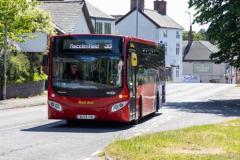
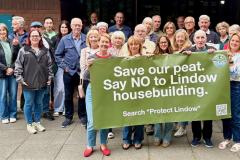
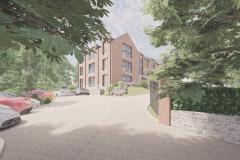
Comments
Here's what readers have had to say so far. Why not add your thoughts below.
As much as the purists and traditionalists are going to dislike it, buying an electronic instrument instead would be a bold, imaginative decision which signifies an orientation of relevance to future generations.
some light upon the benefactor of the church organ, James Brown, although
not as much as I might have been able to a few weeks ago. My mother has just
died, she is a descendant of Levi Brown also, via his daughter Bertha Brown
(1869-1948), the bad news is that to her James Brown was WICKED UNCLE JAMES.
James was the eldest son of Levi Brown, the founder of Browns of Wilmslow
who built many of Wilmslow finest Victorian era houses. Levi was a self made
man, son of a handloom weaver. He was born in a house which was once on land
graciously donated by the Earl of Stamford to the Parish of Wilmslow, you
can see see the site near the war memorial, there is a part of the kerb let
down to allow the mower access to the grass, that was the site of John
Brown's house the church would have filled the view from his window. Levi
was working in Quarry Bank Mill, Styal, before the age of 15. He managed to
get out of the mill and get an apprenticeship as a joiner and he went on to
build a joinery operation into a builders company that was the biggest
building operation in town. Levi married Ann Henshaw, daughter of blacksmith
James Henshaw. The Henshaw family seemed to provide the blacksmiths for most
of East Cheshire, but the Henshaw men all died quite young.
At one time Levi Brown's business headquarters and home is what is now Kwik
Fit in Station Road.
Levi and Ann had three children, James, Bertha and Ernest Levi, the
youngest Brown was killed on the railway in 1880, aged just 9. (I was trying
to find more details on this story when I came across this post). As the
eldest son James inherited the bulk of the fortune that Levi had built up.
However he did not provide a home for his mother who had to live with
Bertha, his daughter. Bertha had been engaged to an eligible bachelor in
Wilmslow society but a man over fond of drink. When Bertha broke off the
engagement because of his drinking the man hanged himself. Bertha was by
this time well past her peak marriage years and she had to settle for my
great grandfather, George Brown (no relation) a lowly milkman working on his
brother's farm which comprised most of what is now Pownall Park. George
lived in a modest little cottage, Lapwing Cottage, which is between Lindow
Common and what later became the Boddington Arms. Levi's widow Ann is
recorded in the 1912 census as living with her son-in-law, a lady of
"private means". While Lapwing Cottage is quite nice now in that time it
wasn't as large and it was home to a milkman, his wife (Bertha) who worked
for the Boddington family as a servant and their two daughters as well as
the elderly widow, who died in 1913.
My mother used to often visit the grave of Levi Brown (1833-1902), which
now sits in the pathway just to the side of the larger and more impressive
resting place of his son James. The grave also contains his widow Ann, his
son-in-law George Brown (died 1936) and his daughter Bertha (died 1948) and
most recently their spinster daughter Annie Brown (died 1983) who some of
the more long standing Wilmslow residents may have remembered for her work
on the milkround fifty or sixty years ago. When my mother took her dog he
would apparently invariably seek out and anoint the grave of WICKED UNCLE
JAMES in the way dogs are wont to do. My mother has no memories of the
generosity of James Brown, public benefactor, she recalls him as a man who
built upon the hard work of his parents and his sister to make a public
facade of wealth and let his elderly mother live several notches below the
station he was accustomed to, living in the rude cottage of a lowly milkman
and domestic servant. Having said all that, it's nice to meet another
cousin. We probably do have a few more details.
I think the successor company to Browns of Wilmslow made it into the
current century but has since gone out of business.
My mother, Stella Willett, was born Stella Croxall, "barefoot and hungry in
the workhouse" in 1935. The workhouse being Workhouse Farm, the former
workhouse which served as a farmhouse for George Brown later in his career
as dairy farmer and milkman. The workhouse was finally demolished to make
way for Gorsey Bank School. My mother died this Saturday and so cannot
confirm all the details about exactly why James Brown had the reputation as
Wicked Uncle James. I suspect she had embellished a few of the details to
make the story more interesting.